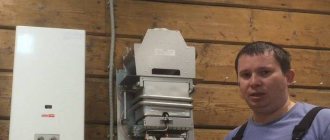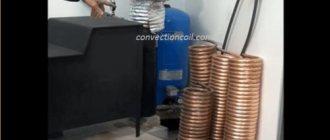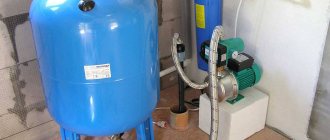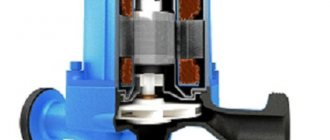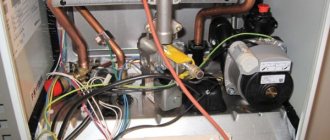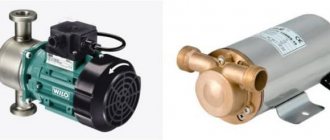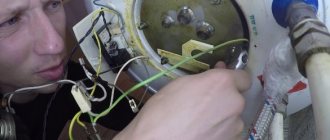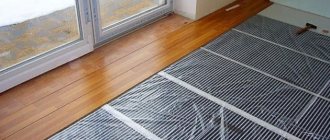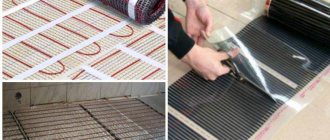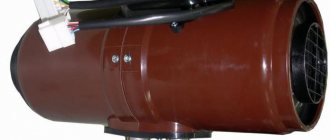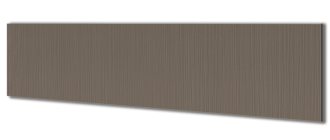Main types of breakdowns of Grundfos pumps
If you know how to handle equipment and have an understanding of the technical structure of water pressure equipment, you can repair the pump yourself.
To do this, you will need to correctly determine the cause of the breakdown and choose a method to eliminate it. Pumping equipment almost always breaks down suddenly, without any special warning signs.
All pumps, regardless of their technical characteristics or operating principle, are most often susceptible to the following malfunctions:
- There is no torque on the moving parts of the equipment.
- Spontaneous shutdown of the device.
- High levels of noise or vibration.
- Low water pressure.
If the device hums, but does not spin, then there is a high probability of oxidation of the rotating shaft, or calcification of the rotating parts. This is possible as a result of long-term downtime of internal mechanisms. When the device not only does not spin, but also does not hum, most likely the problem is in the power supply to the motor. Spontaneous shutdown of pumping equipment indicates the presence of mineral deposits between the starter and rotor.
Loud noise during operation is usually caused by air leaks into the water supply pipes due to depressurization of the unit. Vibration indicates faulty bearings on the rotating components of the pump. A drop in pressure is usually caused by clogged filters, or by improper connection of the device to a three-phase power source.
How circulation pumps are designed and work
The operating principle of circulation pumps is not much different from the design of drainage models. The device body is made of durable materials that are resistant to corrosion. Typically this is stainless steel, aluminum, brass, cast iron. When started, the engine begins to rotate a rotor equipped with an impeller. As a result, the pressure at the inlet pipe decreases and water is sucked into the hydraulic chamber. The rotation of the impeller creates centrifugal force. Water is pressed against the walls of the chamber and forcefully thrown into the pipeline through the outlet. This ensures forced circulation of the coolant in a closed heating circuit.
Design differences between different types of devices
There are two main types of pumps - with “wet” and “dry” rotors. The “wet” rotor is separated from the water by special sealing rings, between which there is a thin film of water. When worn, the rings wear out and are pressed closer to each other, which guarantees the tightness of the structure for several years. Cooling and lubrication are provided by the working fluid. Pumping equipment of this type is installed in systems with small coolant volumes, because It is difficult to ensure tight connections in large-diameter structures. When installing devices, it is important to ensure that the shaft is positioned strictly horizontally, otherwise the device may malfunction.
The main advantage of “dry” models is their high efficiency. It is 80%, which distinguishes it favorably from the 50% efficiency of “wet” type devices. The rotors of “dry” heating circulation pumps do not come into contact with the liquid. Depending on the location of the engine, structures are divided into horizontal (cantilever), vertical and block. All “dry” models are noisy during operation and are sensitive to the quality of the coolant and air purity. It is advisable to install them in separate rooms of boiler rooms, controlling the purity of the water in the system and the air in the room.
How to disassemble Grundfos
When you are absolutely sure that the cause of the problem is some internal problem in the mechanism, you should begin disassembling the pump.
Before this, it should be disconnected from the power supply and the water should be drained from the internal cavities and tubes. You should start disassembling the device from the junction box, after which a visual inspection of the internal components is carried out. In this way, you can find a burnt or failed part. In a situation where all the components in this part of the device are in working order, you should continue disassembling.
Grundfos deep-well pumps are disassembled as follows:
- The body is firmly clamped in a vice. This is best done using two halves of a steel pipe of the appropriate diameter. This eliminates the possibility of deformation of the device body.
- If you cannot unscrew the lid by hand, the threaded seam should be lubricated with a special liquid. Often, silt and dirt accumulate at the junction of the cover and the body itself, making it difficult to turn the thread.
- After removing the cover, remove the rotor from the working chamber.
When disassembling, the pump motor must be in a vertical position. In this case, the leakage of lubricating oil from it can be avoided.
Removing and cleaning the sensor
For normal operation of the pump, it is necessary to polish its internal walls.
Special attention should be paid to the sensor. Dirt and rust that settle on it over time often cause Grundfos pumps to lose their performance. As a result, their work may stop altogether. Therefore, the sensor also needs to be removed and cleaned of deposits. To do this, remove the cover from the control unit and disassemble the pump housing into two halves.
To remove the sensor itself, you need to unscrew the screws using the key that comes with the pump. After unscrewing the screws, the sensor housing can be easily removed by hand. If this cannot be done due to settled dirt, it can be pryed off with a screwdriver. Since this part is made of plastic, the manufacturer himself recommends cleaning it more carefully and using less aggressive materials. To do this, you can use a regular toothbrush.
Grundfos repair
To diagnose the engine, you will need an ohmmeter.
When you rotate the handle of this device, it produces a voltage of about 200V. If the ohmmeter readings are extremely high, tending to plus infinity, then there is a break in the working phase. If the resistance values are very small, then we can confidently talk about a short circuit between the turns of the electric motor. It is impossible to carry out high-quality engine repairs with such problems at home, and it should be taken to a specialized workshop.
If everything is in order with the engine and electrical equipment, the cause of the malfunction may be mechanical breakdowns, or clogging of the internal working spaces with debris, silt, or mineral deposits. In this situation, the insides of the pump are washed in running water and thoroughly cleaned with a brush. Particular attention should be paid to bearings, water supply wheel, and valves. O-rings and seals must be in good condition, elastic and without mechanical damage.
After cleaning the parts and components, you can reassemble the device and try to start it up again. At the same time, do not forget to fill the working chambers of the device with water. Running it “dry” will certainly lead to an even more serious breakdown, after which it will be necessary to repair the pumping station at a service center.
DIY pumping station repair
To resume the work of the NS, you must do the following:
Suction line
Do-it-yourself check valve repair usually involves removing dirt or long-fiber debris that is preventing the valve from closing. For more complex breakdowns, the part is replaced.
If cracks appear on the reinforced hose through which the pump sucks air, they must be sealed with reinforced tape for repairing pipelines.
Pump
A worn housing or impeller will need to be replaced.
There are models in which a stainless steel liner is installed into the cavity. It is much cheaper to replace it than the entire body.
Cleaning the contact group and connecting pipe from dirt usually does not cause any difficulties for users.
By the way, it is best to remove plaque from contacts with a soft school eraser.
The relay is adjusted by rotating two nuts screwed onto the rods with springs on them.
The value of the switch-on pressure (also called lower) depends on the degree of compression of the large spring, and the small one regulates the difference between it and the switch-off pressure (upper). Please note, not the cut-off pressure itself, but the difference between the upper and lower pressures.
Grundfos service
To avoid the above problems, you should follow the operating rules of pumping equipment, as well as perform timely maintenance. Installation of Grundfos deep-well equipment and trial operation are best left to professionals. Before starting pumping stations, you should always make sure that there is water in them to avoid dry starting.
If you use the pump only in the summer season, then the rest of the time it should still be turned on, at least for half an hour every 3-4 weeks. This will avoid problems with oxidation of its internal parts. With Grundfos drainage pumps, special attention should be paid to the permeability of pipes and pipes. Since such equipment operates in particularly difficult conditions, which entail the risk of clogging, it is necessary to clean it from time to time with a strong stream of water.
Grundfos equipment, due to its reliability, performance and ease of operation, is widely used in all industries.
They are used in the housing and public utilities sector in the construction of centralized heating, water supply, sewage drainage, servicing agricultural and forestry enterprises, as well as in equipping industrial complexes.
Main causes of malfunctions
Let's mentally walk through the NS and see what can cause malfunctions in its operation.
Suction line (for systems with self-priming pumps)
After the unit is turned off, it is held in place by a check valve installed at the beginning of the water intake pipe.
During long periods of inactivity, the pump must be refilled.
If you are looking for a self-priming pump that does not need to be primed, choose a vortex type unit. However, keep in mind that it has very low efficiency.
The lack of water in the suction line may be due to the following reasons:
- the water in the source has dropped below the intake pipe;
- the check valve is not functioning properly;
- cracks or gaps appeared in the line through which air entered it (the water column ruptured).
Symptoms
If the pump is equipped with a dry running sensor, the pump will automatically turn off. Otherwise, it will work (until the overheating protection is triggered), but no water will flow.
Pump
The following troubles can happen to the main element of the NS:
- impeller sticking: a hum is heard, but the motor does not rotate;
- the capacitor has failed: the symptoms are the same;
- due to wear of the housing and impeller, the pump cannot develop a pressure in the pipeline at which the pressure switch is activated: the unit does not turn off even with zero water flow;
- The engine is burnt out: the unit does not turn on, the smell of burnt insulation is heard.
Pumping station with built-in ejector
Pressure switch
Most often, the relay stops functioning for the following reasons:
- Dirt has accumulated on the contacts, preventing the electrical connection: the pump has stopped turning on;
- the connecting pipe is clogged: the relay stops responding to changes in pressure in the water supply;
- the springs weakened, as a result of which the boundaries of the operating pressure range “floated”.
Water pipes
Signs of a clogged pipeline depend on where the relay is installed:
- the relay is located in the house next to the hydraulic accumulator, that is, a plug has formed somewhere between it and the pump: pumping water into the hydraulic accumulator began to take longer than usual;
- the relay is installed next to the pump, that is, it is located between it and the plug: the unit operates jerkily (frequent on/off).
Stages and rules of repair
Repair of the Sololift pump, as well as repair of a Grundfos pumping station for any purpose, can be done independently, having first identified the source of the problem.
Equipment diagnostics involves several stages:
- start the pumping station, assess the noise and vibration levels;
- check the pressure indicators;
- make sure that the motor does not overheat during operation;
- check the presence and quality of lubrication of node connections;
- make sure the integrity of the structure and the absence of leaks;
- inspect the box for secure fixation of the terminals.
What to do if pumping equipment gets hot
If a problem occurs, pay attention to the openness of the shutoff valve system. Then you need to check whether the pump was installed correctly. The choice of installation location also matters.
Next, you need to check the return valve and rotation mechanism. Additionally, carry out preventive maintenance of the system and release excess gas from the pipes. You can compare the heating of the pump and the return valve. If it differs too much, you need to contact a specialist.
The malfunction occurs due to power supply. You need to check each of the phases with a voltmeter probe. Finally, you can flush the pump.
The pump for forced supply of liquid to the heating system becomes very hot during operation. This is a common problem in private homes and is associated with many factors. To prevent damage to equipment, it is advisable to carry out preventive maintenance and repairs in a timely manner. In this case, the heating of the room will not be interrupted at the wrong time.
The main function of a circulation pump in a heating system is to pump hot liquid through the pipelines of heating and hot water supply systems. Forced circulation of the coolant is necessary to ensure rapid and uniform heating of all rooms of the building. Pumps are installed in buildings of any type and purpose, if provided for by the heat supply project. Thanks to them, you can create a comfortable microclimate in your home, regardless of the weather and climatic conditions of the area. However, no technique is perfect. Sometimes the heating circulation pump gets hot and does not perform its functions well. What is the problem? Is it possible to understand the reasons for the device overheating and eliminate them yourself?
Video on the topic
Pumping equipment manufacturers such as Grundfos produce high-quality pumps that are characterized by high performance and long service life. But even high-quality equipment is susceptible to breakdowns if the standards of use are not followed or if periodic maintenance is not carried out. The result is a partial or complete cessation of the functioning of the device.
Repair of Grundfos pumps is usually carried out by specialized workshops, which charge a substantial fee for their services. However, the problem itself is not always worth the money spent. The solution may be to repair the Grundfos pump yourself, which is quite possible if you have certain knowledge.
